Spycraft: The Cardan Grille System
One of the most exciting elements of the TURN premiere is the debut of 18th century spycraft in the form of a shiny copper grille used by Abraham Woodhull to decipher a secret message hidden within a British letter. Not only is it a dramatic signal of Abraham’s decision to become involved in intelligence gathering — it’s also an authentic, documented method of spycraft used during the American Revolution.
This particular method of secret message writing is known as the Cardan system, and the copper plate is a version of a Cardan (or Cardano) Grille, named after Girolamo Cardano (aka Jerome Cardan), who invented it in the 16th century. John Nagy, in his book Invisible Ink: Spycraft of the American Revolution, provides a handy description:
“[A] Cardano Grille [was] a sheet of stiff material with irregularly spaced rectangular holes which was placed over the writing paper. The secret message was then written in the holes, the grille or mask removed from the writing paper, and a harmless message was filled in around the secret message to camouflage its being there. To read the message, an identical grille or mask was placed over the writing.” (Invisible Ink, p3)
When executed successfully, the “dummy” or cover message would be unremarkable enough to avoid raising suspicion that a secret message was contained within it. A letter authored by a British or Continental officer full of broken or awkward sentences would almost certainly be scrutinized for secret meanings if intercepted by the enemy. Even then, it’d be nearly impossible to discern the secret message without possessing the matching grille, which makes the Cardan system a fairly secure one. You need both pieces in order to decipher the real message.
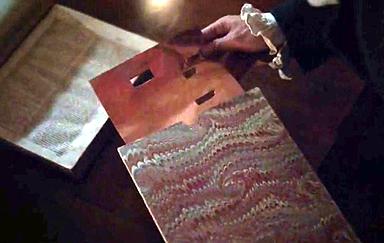 The system was not without its weaknesses, however. The presence of the grille itself is almost guaranteed to arouse suspicion – as we see in the pilot episode when Abraham pulls the copper grille out of its envelope. Only after discovering the grille does he look around for something to match it with. (For that matter, the grilles were usually stiff paper or cardboard, and not shiny copper sheets that would attract attention and be more difficult to conceal. Paper grilles are much easier to create, and can be folded or rolled up for easier transport.) Abraham was also pretty fortunate to have discovered the correct orientation of the grille on the first try – since there are four possible ways to position a rectangular grille like the one we saw in the show. There’s a slight chance that the reader might take away an incorrect message if they position the grille incorrectly.
The system was not without its weaknesses, however. The presence of the grille itself is almost guaranteed to arouse suspicion – as we see in the pilot episode when Abraham pulls the copper grille out of its envelope. Only after discovering the grille does he look around for something to match it with. (For that matter, the grilles were usually stiff paper or cardboard, and not shiny copper sheets that would attract attention and be more difficult to conceal. Paper grilles are much easier to create, and can be folded or rolled up for easier transport.) Abraham was also pretty fortunate to have discovered the correct orientation of the grille on the first try – since there are four possible ways to position a rectangular grille like the one we saw in the show. There’s a slight chance that the reader might take away an incorrect message if they position the grille incorrectly.
Some people expand the definition of the “Cardan system” to include all shapes and forms of message masks, but Cardano’s original method used rectangular cutouts exclusively. Sir Henry Clinton — the British general who appointed John André as his Chief of Intelligence – used numerous Cardan grilles and message masks in both personal and official correspondence, even as early as 1776. Many of them still survive in the Clinton Papers which are housed at the University of Michigan’s Clements Library. The contents of that collection strongly suggest that we’ll see other variations of “masked” messages in future episodes of TURN — so I won’t discuss those just yet.
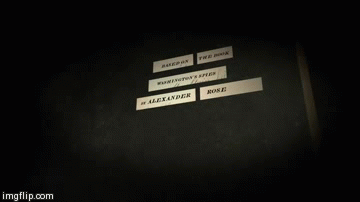
During the Revolutionary War, the Americans preferred other forms of cryptography (secret writing) over grilles and masks. The Cardan Grille system is more accurately described as a form of steganography: a specific subset of cryptography that involves concealing a secret message within a larger, unrelated message.
This method of secret writing is an ancient one: both the Cardan grille and the usage of the word “steganography” date back to the 16th century. Just because it’s old, however, doesn’t mean it’s obsolete. Steganography is finding new life in our modern age of computers, with messages being subtly slipped into lines of computer code, or even into the arrangement of pixels in a digital image. (And you might even remember an especially amusing example of steganography that went viral and made headlines earlier this year.)
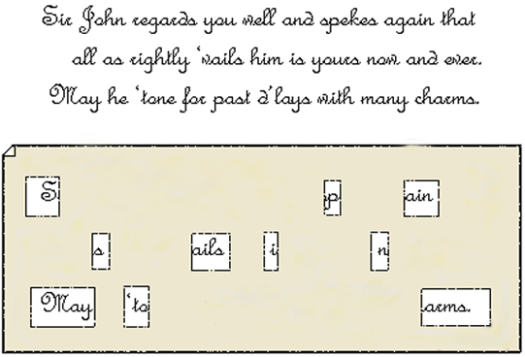
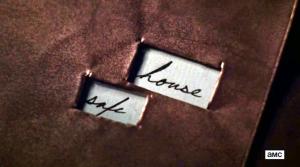
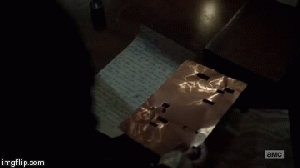
No comments:
Post a Comment